ECMAScript 2025
New Features in JavaScript 2025
| Feature | Description | |
|---|---|---|
| RegExp /v flag | An "upgrade" to the /u (unicode) flag | |
| RegExp.escape() | Returns a string where regex characters are escaped | |
| Float16Array | A Typed Array that stores 16-bit floating-point numbers | |
| Math.f16round() | Returns the nearest 16-bit floating point number | |
| Promise.try() | Starts a promise chain for handling promise rejections | |
| Import Attributes | Import attributes allowed in import statements |
New Set Features in 2025
| Feature | Description | |
|---|---|---|
| union() | Returns the union of two sets | |
| intersection() | Returns the intersection of two sets | |
| difference() | Returns the difference between two sets | |
| symmetricDifference() | Returns the symmetric difference between to sets | |
| isSubsetOf() | Returns true if this set is a subset of a given set | |
| isSupersetOf() | Returns true if this set is a superset of a given set | |
| isDisjointFrom() | Returns true if this set has no elements in in a given set |
Warning
These features are relatively new.
Older browsers may need an alternative code (Polyfill).
The RegExp /v Flag
The v flag is an "upgrade" to the u flag.
The u (unicode) flag enables full Unicode support in regular expressions.
The v flag enables more Unicode-related features.
The new features are:
- The \p escape sequence matches strings, instead of just characters.
- The character class is upgraded to allow intersection, union, and subtraction syntaxes, as well as matching multiple Unicode characters.
Examples
let text = "Hello 😄";
let pattern = /\p{RGI_Emoji}/v;
let result = pattern.test(text);
Try it Yourself »
let text = "Hello 😄";
let pattern = /\p{RGI_Emoji}/;
let result = pattern.test(text);
Try it Yourself »
/regexp/v is supported all in modern browsers since May 2025:
| Chrome 136 |
Edge 136 |
Firefox 134 |
Safari 18.2 |
Opera 121 |
| Apr 2025 | May 2025 | Jan 2025 | Des 2024 | Jun 2025 |
The RegExp.escape() Method
The RegExp.escape() method returns a string where characters that belongs
to the regular expression syntax are escaped.
This makes it possible to treat characters like +, *, ?, ^, $, (, ), [, ], {, }, |, and \ literally, and not as part of a regular expression.
Example
Create a regular expression that matches the string "[*]":
// Escape a text for to use as a regular expression
const safe = RegExp.escape("[*]");
// Build a new reglar expression
const regex = new RegExp(safe);
// Text to replace within
const oldText = "[*] is a web school.";
// Perform the replace
const newText = oldText.match(regex, "W3Schools");
Try it Yourself »
RegExp.escape() is supported all in modern browsers since May 2025:
| Chrome 136 |
Edge 136 |
Firefox 134 |
Safari 18.2 |
Opera 121 |
| Apr 2025 | May 2025 | Jan 2025 | Des 2024 | Jun 2025 |
The Float16Array Method
A Float16Array is a TypedArray that stores 16-bit (half-precision)
floating-point numbers in the IEEE 754 half-precision format.
Float16Array requires half the memory of Float32Array
and a quarter of Float64Array.
Example
const myArr = new Float16Array([1.5, 2.5, 3.5, 4.5]);
let bytes = myArr.BYTES_PER_ELEMENT;
let length = myArr.length;
Try it Yourself »
The Float16Array object is supported in all modern browsers since June 2024:
| Chrome 135 |
Edge 135 |
Firefox 129 |
Safari 18.2 |
Opera 120 |
| Apr 2025 | Apr 2025 | Aug 2024 | Des 2024 | May 2025 |
The Math.f16round Method
The static Math.f16round() method returns the nearest 16-bit floating point representation of a number.
Example
let a = Math.f16round(2.60);
let b = Math.f16round(2.50);
let c = Math.f16round(2.49);
let d = Math.f16round(-2.60);
let e = Math.f16round(-2.50);
let f = Math.f16round(-2.49);
Try it Yourself »
The Math.f16round() method is supported in all modern browsers since June 2024:
| Chrome 135 |
Edge 135 |
Firefox 129 |
Safari 18.2 |
Opera 120 |
| Apr 2025 | Apr 2025 | Aug 2024 | Des 2024 | May 2025 |
The Promise.try() Method
The Promise.try() method starts a promise chain from potentially throwing, synchronous code.
This ensures exceptions are correctly handled as promise rejections.
Example
function compute() {
return Promise.try(() => {
const v = mayThrowSync();
return asyncFunc(v);
});
}
JavaScript Set union()
The union() method returns the union of two sets.
The union() method returns a new set containing the elements which are in this set,
or in the argument set, or in both:
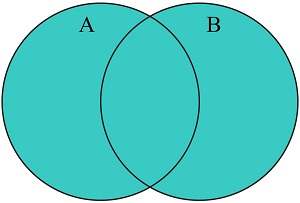
Example
const A = new Set(['a','b','c']);
const B = new Set(['b','c','d']);
const C = A.union(B);
Try it Yourself »
The union() method is supported in all modern browsers since June 2024:
| Chrome 122 |
Edge 122 |
Firefox 127 |
Safari 17 |
Opera 108 |
| Feb 2024 | Feb 2024 | Jun 2024 | Sep 2023 | Mar 2024 |
JavaScript Set intersection()
The intersection() method returns the intersection of two sets.
The intersection() method returns a new set containing the elements which are in this set
and in the argument set:
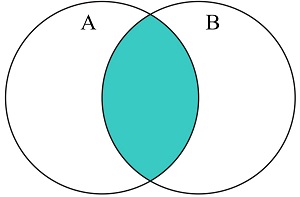
Example
const A = new Set(['a','b','c']);
const B = new Set(['b','c','d']);
const C = A.intersection(B);
Try it Yourself »
The intersection() method is supported in all modern browsers since June 2024:
| Chrome 122 |
Edge 122 |
Firefox 127 |
Safari 17 |
Opera 108 |
| Feb 2024 | Feb 2024 | Jun 2024 | Sep 2023 | Mar 2024 |
JavaScript Set difference()
The difference() method returns the difference between two sets.
The difference() method returns a new set containing elements which are in this set
but not in the argument set:
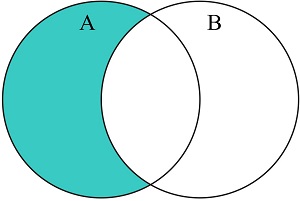
Example
const A = new Set(['a','b','c']);
const B = new Set(['b','c','d']);
const C = A.difference(B);
Try it Yourself »
The difference() method is supported in all modern browsers since June 2024:
| Chrome 122 |
Edge 122 |
Firefox 127 |
Safari 17 |
Opera 108 |
| Feb 2024 | Feb 2024 | Jun 2024 | Sep 2023 | Mar 2024 |
JavaScript Set symmetricDifference()
The symmetricDifference() method returns the symmetric difference between to sets.
The symmetricDifference() method returns a new set containing elements which are in this set
or in the argument set, but not in both:
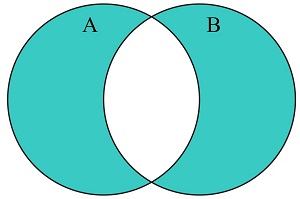
Example
const A = new Set(['a','b','c']);
const B = new Set(['b','c','d']);
const C = A.symmetricDifference(B);
Try it Yourself »
The symmetricDifference() method is supported in all modern browsers since June 2024:
| Chrome 122 |
Edge 122 |
Firefox 127 |
Safari 17 |
Opera 108 |
| Feb 2024 | Feb 2024 | Jun 2024 | Sep 2023 | Mar 2024 |
JavaScript Set isSubsetOf()
The isSubsetOf() method returns true
if all elements in this set are elements in the argument set:
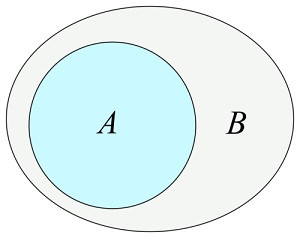
Example
const A = new Set(['a','b','c']);
const B = new Set(['b','c','d']);
let answer = A.isSubsetOf(B);
Try it Yourself »
The isSubsetOf() method is supported in all modern browsers
since June 2024:
| Chrome 122 |
Edge 122 |
Firefox 127 |
Safari 17 |
Opera 108 |
| Feb 2024 | Feb 2024 | Jun 2024 | Sep 2023 | Mar 2024 |
JavaScript Set isSupersetOf()
The isSupersetOf() method returns true if all elements in the argument set are also in this set:
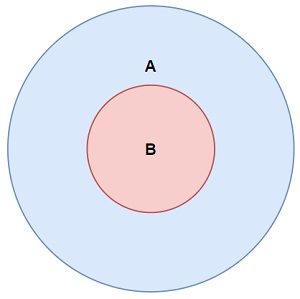
Example
const A = new Set(['a','b','c']);
const B = new Set(['b','c','d']);
let answer = A.isSupersetOf(B);
Try it Yourself »
The isSupersetOf() method is supported in all modern browsers since June 2024:
| Chrome 122 |
Edge 122 |
Firefox 127 |
Safari 17 |
Opera 108 |
| Feb 2024 | Feb 2024 | Jun 2024 | Sep 2023 | Mar 2024 |
JavaScript Set isDisjointFrom()
The isDisjointFrom() method returns true
if this set has no elements in common with the argument set:
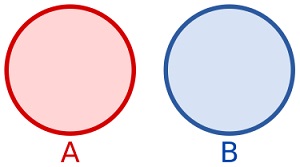
Example
const A = new Set(['a','b','c']);
const B = new Set(['b','c','d']);
let answer = A.isDisjointFrom(B);
Try it Yourself »
The Set.isDisjointFrom() method is supported in all modern browsers since June 2024:
| Chrome 122 |
Edge 122 |
Firefox 127 |
Safari 17 |
Opera 108 |
| Feb 2024 | Feb 2024 | Jun 2024 | Sep 2023 | Mar 2024 |
Note
Using both flags (u and v) results in a SyntaxError.
Modules with Import Attributes
Syntax
import {names} from "module-name" with {key:"data"};
Examples
import config from "config.json" with {type:"json"};
import styles from "styles.css" with {type:"css"};
import data from "data.json" with {type:"json"};

